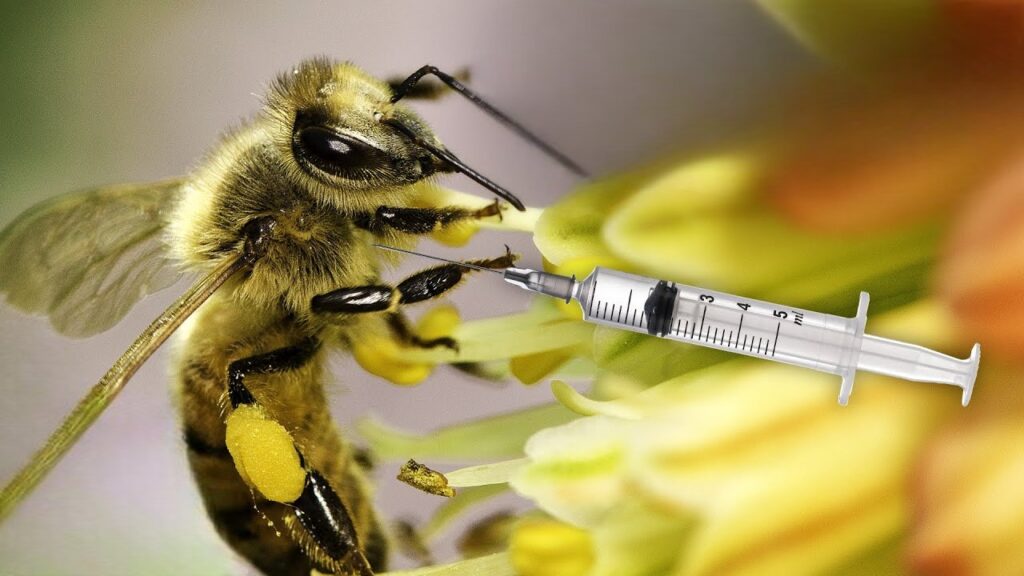
It is often called a lifter or an Electrohydrodynamic aircraft.
Like propeller or jet propulsion, ionocraft is a new type of aerial vehicle which is more advanced than traditional technologies.
What is Ionocraft?
Ionocraft is an ion-propelled aircraft which flies with no moving parts or without combustion.
Click to know : How Oldest Immortal Jellyfish is the Secret Key To Immortality?
First ionocraft
The first ionocraft was invented in 1959.
From that moment, researchers had done many attempts for self-sustained liftoff but they failed.
The main problem was to develop a high-voltage power supply that is light enough to fly.
Finally, a new hope of ionocraft has come due to the recent advances in semiconductor technology.
Working Principle
They propel ionized air molecules downward which creates thrust and helps ionocraft to fly.
They first ionize air with a high voltage to create thrust.
Actually, there are a pair of conductors, one with a sharp and other without sharp, which in combination moves ionic wind downwards.
How Ionocraft Works?
Ionocraft works on principle of Electrohydrodynamics (EHD).
EHD is the study of the concept of ions and electric fields.
This mechanism works by ionizing air and using electric fields to accelerate the air.
It produces thrust which causes it to fly.
An air gap separates those two conductors which is just a few inches wide.
That conductor induces a strong electric field around it with a sharp edge when high voltage is applied.
The imbalanced electric field causes the air molecules near sharp-edged conductors to ionize.
Finally, they are propelled toward the conductor of opposite polarity.
So, the ionized molecules move downward, they also drag some neutral molecules with them.
This creates a macro-scale movement for upward propulsion force on the aircraft.
The unequal way is the main cause for creating and collecting ionized air molecules.
Homemade Ionocraft
The ionocraft could be made at home by using our daily life materials.
The conductor possessing a sharp edge is known as Corona Wire.
Except for the corona wire or without sharp edges, the wire is called a collector.
How to make an ionocraft at home?
Mainly ionocraft consists of 3 parts:
- Corona Wire
- Collector Wire
- Structural Wire
The topmost importance of ionocraft is to reduce the weight of its whole system and make it light-weight.
For that reason, while making an ionocraft, you will need:
- Thin Bare Copper Wires for Corona Wires
- Aluminium Foil for Collector Plates
- Any Light-Weighted Wood for Structural Supports
Materials Needed
- Aluminium Foil
- Wooden sticks
- A copper wire
- Series of 9v battery
- Resistor
Process
- Take some wooden sticks, cut and fix as in the shown picture.
- wrap aluminium foil around it.
- Make numerous coils of copper wire running in parallel with aluminium foil.
- Create an appropriate air gap between copper wire and aluminium foil.
Pros of Ionocraft
- It’s combustion free and requires no moving parts.
- Potentially, it can bring a new type of aircraft with very low heat and noise profile.
- It will often need very low maintenance.
- It will give a long service life.
- Military have great potential to use ionocraft for secret and effective operation.
- Ionocraft as delivery drones in urban areas, will keep the buzzing noise low.
Cons of Ionocraft
- The successful ionocraft launch hasn’t been demonstrated yet.
- The patent for Ionocraft was made 5 decades ago.
Electrohydrodynamics (EHD) is more energy saving than present day jet engines.
The thrust to power ratio of EHD is 22.7 times that of modern aircraft engines.
While EHD has 110 N/kW but Modern Aircraft engines have approximately 4 N/kW.
They need 100 kV voltage to fly.
Actually, this is needed to have practical thrust density (force per cross-sectional area) of the engine.
But no power supply could provide that much voltage, that’s why they are too heavy to fly.
A New Hope
Many recent advances have been made in semiconductor technology.
So, they offer a new hope to achieve a successful ionocraft flying test.
This helps for the further advancement of ionocraft research.
High voltage transistors and diodes used to cover a large die to resist high voltage stress because silicon was the only workable material for power semiconductor devices.
That die limits the switching frequency to give large device capacitance, causing obstacles for ionocraft to fly.
Recently developed Gallium Nitride (GaN) and Silicon Carbide (SiC) make high voltage devices possible.
They contain small capacitance to enable fast switching frequency.
This reduces the weight of the whole system by leading to small inductors and capacitors in the power supply.
Those new semiconductor devices are the key for making ionocraft practical.
Ionization in Space (Ion Engine)
In space, ion thrusters are used mainly for maintaining proper position of communication satellites.
They are often used for propelling spacecraft throughout the solar system.
For space missions of long distance, ion propulsion is considered to be ideal.
Ion thrusters have high specific impulses (ratio of thrust to the rate of propellant consumption).
So, a spacecraft with ion thrusters needs very less propellant.
We don’t need to carry enough chemical propellant on the spacecraft to complete the desired mission.
But the same spacecraft with chemical thrusters will need more propellant.
Objectives of Ion Thruster (Ion Propulsion)
- Reduction of System Cost
- System Complexity Reduction
- Performance Enhancement (Higher Thrust-To-Power Capability)
Working of Ion Thrusters
Ion thrusters produce ions of propellant either by adding or removing electrons.
Those propellant (anything to throw) could be any gas which could easily be ionized.
How do thrusters ionize propellant?
They use a process called electron bombardment.
Those thrusters bombard electrons to ionize the propellant.
High-energy electrons collide with propellant atoms to make them positively charged ions.
Plasma gets formed when the gas containing positive ions and negative electrons in proportions result in no overall electric charge.
Actually plasma is formed from gas so, it definitely has some of the properties of the gas.
Although they are plasma, they are affected by electric and magnetic fields.
The common examples of plasma are lightning, aurora and welding arcs.
Click to know : How can we feed the world using plasma technology in agriculture?
Propellant of Ion Propulsion
Xenon is commonly used in ion propulsion for propellant.
Pros of xenon as Propellant
- Easily Ionizable: Xenon gets easily ionized because its atoms absorb twice as much energy as expected.
- Inert : It is inert so it doesn’t react with other gases.
- High storage Density : Xenon has high storage density thus it is suitable for storing on spacecraft.
- Desirable Thrust: When Xenon’s ions are accelerated, they generate a desirable level of thrust.
Discharged Hollow Cathode helps to generate electrons by a process called Thermionic Emission.
Discharged chamber walls attract electrons produced by the discharge cathode.
The thruster’s discharge power supply applies voltage to charge high positive potential.
The discharge chamber contains neutral propellant.
Positively charged ions are produced when the propellant is bombarded with electrons.
High-strength magnets help the electrons not to go in discharge channel walls.
This makes time consuming for the electrons to occupy the discharge chamber.
Thus, it increases the chance of an ionizing event.
At the end of the ion thrusters, there are thousands of very tiny aligned holes called apertures.
The positively charged ions move to the apertures.
The very first grid is called screen grid which is a positively charged electrode.
A very high positive voltage helps to force the discharge plasma to move at a high voltage where it is applied to the screen grid.
Negatively charged electrode (the accelerator grid) attracts the ions with a very high speed upto 90,000 mph.
An ion beam with bluish color is accelerated out of the thruster to produce thrust.
Actually, the ion beams are nothing but positively charged ions.
Another hollow cathode called neutralizer, helps to throw the same quantity of electrons for neutralizing the total charge of the exhaust beam.
What would happen if the spacecraft is without a neutralizer?
In this condition, the spacecraft would form a negative charge.
This causes the ions to return to the spacecraft, reduces thrust and causes spacecraft erosion.
What are the primary parts of an ion propulsion system?
There are 4 primary parts of an ion propulsion system. They are:
- Ion Thruster
- Power Processing Unit (PPU)
- Propellant Management System (PMS)
- Digital and Interface Unit (DCIU)
What is the function of PPU?
The function of PPU is to convert solar cells or a nuclear heat source into electric power.
Thus the electric power is used to operate the hollow cathodes and to produce the ion beam.
PMS contains a high-pressure assembly (HPA) which lowers the xenon pressure to needed level pressure for ion thrusters.
A Low-Pressure Assembly (LPA) measures the needed pressure level for ion thrusters with accuracy.
What is the function of the DCIU?
The function of the DCIU is to check system performance and to make communication with the spacecraft computer.
Current Use of Ion Propulsion
- Communication satellites use ion thrusters (based on NASA design) to keep them in Earth’s Geosynchronous orbit.
- If communication satellites need to move to a desired location then, ion thrusters help them by generating thrust.
- It is used in deep traveller spacecraft like Dawn spacecraft to travel deep into the solar system.
Dawn Spacecraft was launched in 2007 to orbit Protoplanets Vesta and Ceres in the asteroid belt between Mars and Jupiter.
Future Use of Ion Propulsion
- It could extend the operational lifetime of satellites.
- Launch, operation and mission costs would be lowered.
- Trip time would be very less.
- It might be used by NASA for future science (astronomical) missions.
- Also for defense applications, the military might use ion propulsion in the future.
Conclusion
Ionocraft will be tomorrow’s future by flying aircraft without any moving parts.
Think what revolution it will bring in our daily lives.
All the noisy drones will be noiseless and calm because they will work on ionocraft.
Making a giant ionocraft might someday replace our aeroplanes and jet engines.
Click to know : Google found a New State of Matter called Time Crystals
![Moon Jellyfish has [ Hidden Secrets ] You don't know moon jellyfish](https://spaceupper.com/wp-content/uploads/2022/11/1-1-300x169.jpg)

![[Oldest Immortal Jellyfish] : Secret Key To Immortality Oldest Immortal Jellyfish](https://spaceupper.com/wp-content/uploads/2021/08/Oldest-Immortal-Jellyfish-300x196.jpg)




